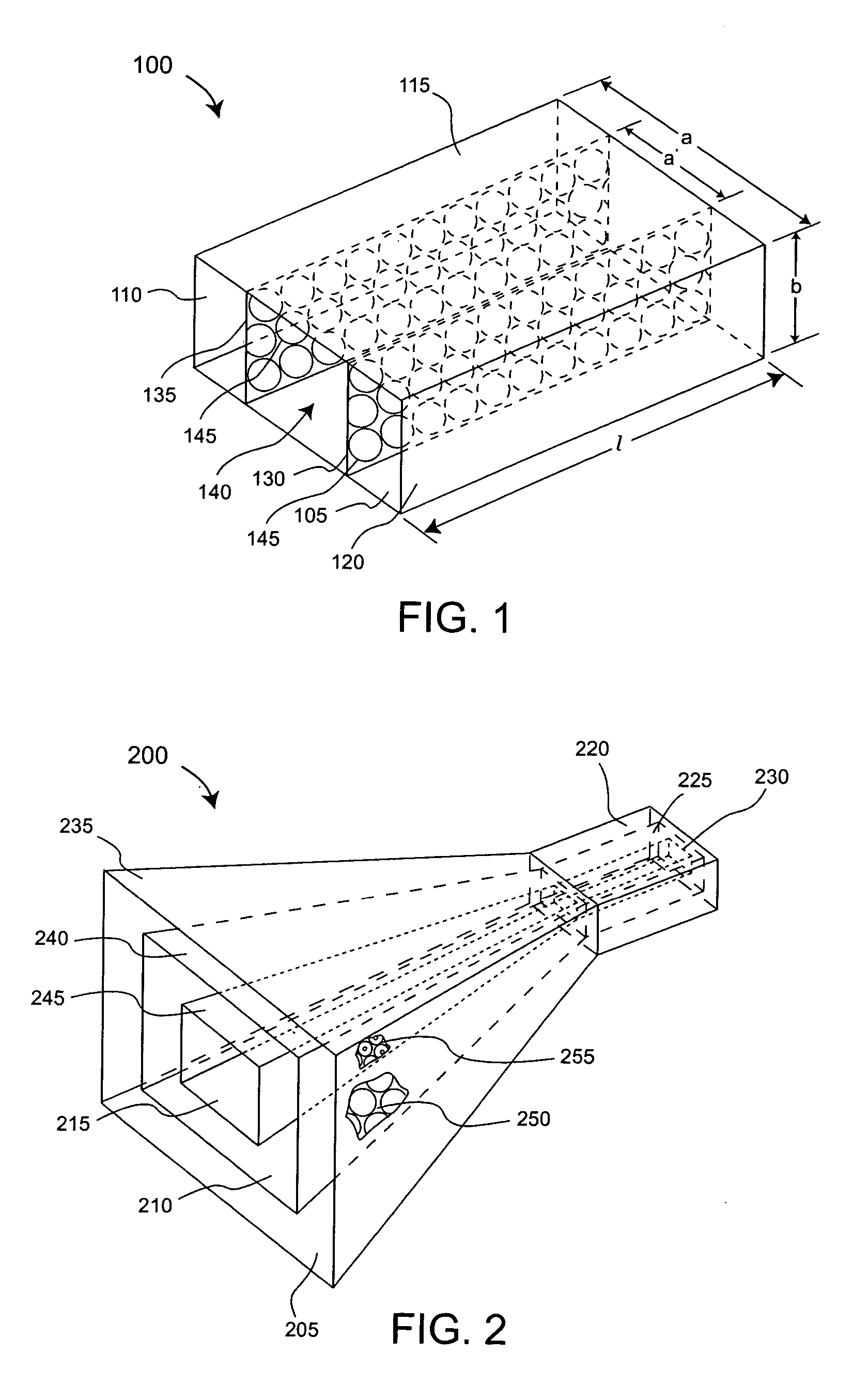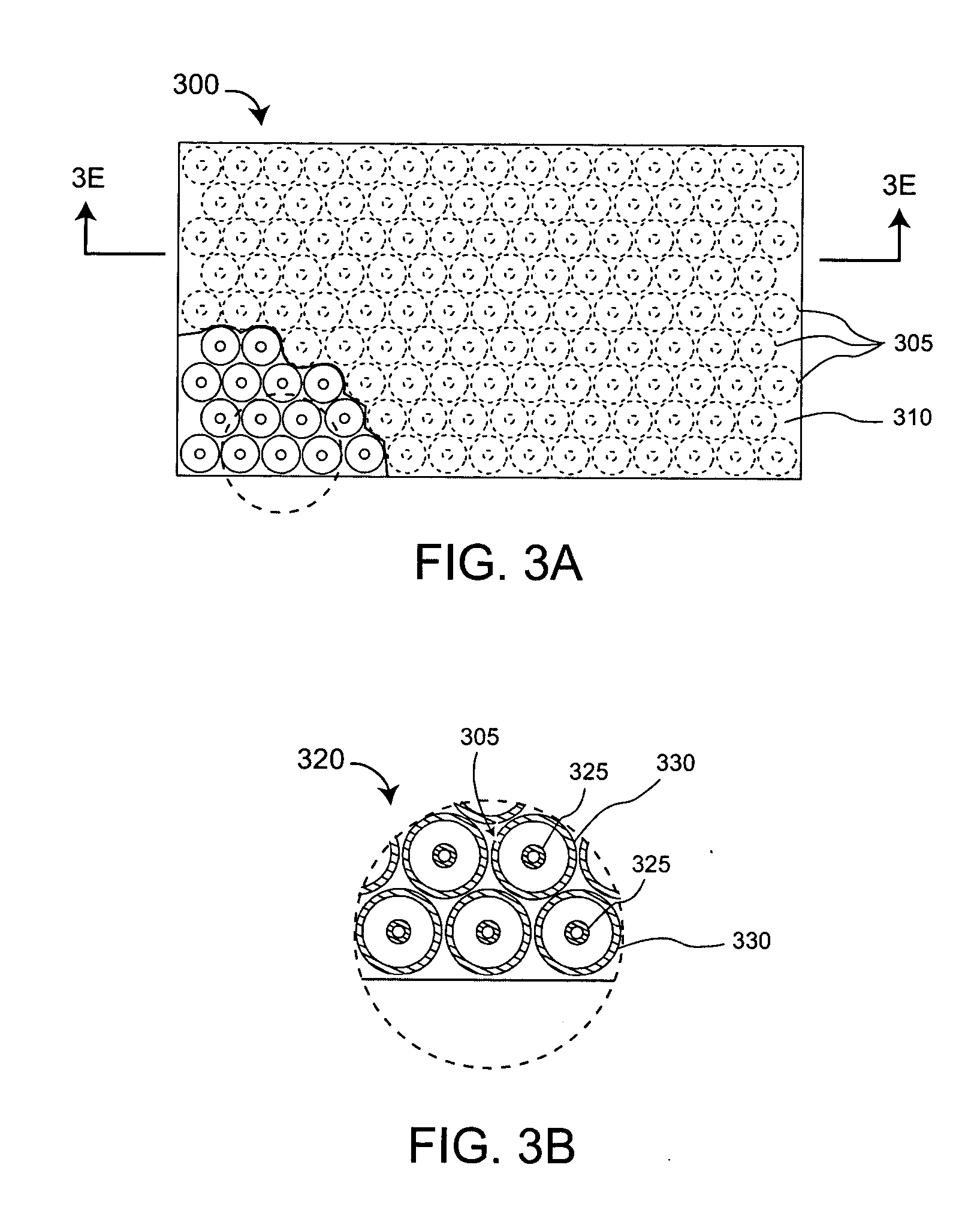Multi-band horn antenna using frequency selective surfaces
a frequency selective surface and antenna technology, applied in the field of horn antennas, can solve the problems of limiting the operational bandwidth of a waveguide, affecting the operation of conventional waveguides, and other modes with different field configurations can occur unintentionally or deliberately, so as to increase the permeability and/or the permittivity of the substrate, reduce the grating lobe of the antenna, and increase the permeability
- Summary
- Abstract
- Description
- Claims
- Application Information
AI Technical Summary
Benefits of technology
Problems solved by technology
Method used
Image
Examples
Embodiment Construction
The present invention concerns a waveguide including a frequency selective surface (FSS), which comprises FSS elements having relatively small inter-element spacing for a given operational frequency. As compared to conventional FSS's, the small inter-element spacing increases FSS bandwidth and eliminates grating lobes by displacing them to higher frequencies. Further, FSS performance with respect to signal angle of incidence is improved.
Referring to FIG. 1, an exemplary multi-band waveguide (waveguide) 100 including FSS's 130, 135 is shown. The exemplary waveguide 100 has a rectangular cross section, however, the present invention is not so limited. Importantly, the present invention can be a waveguide having any suitable configuration defining a waveguide cavity 140. For example, the waveguide can have a cross section which is round, square, elliptical, triangular, or any other suitable shape. Further, the waveguide cavity 140 can be filled with a dielectric material or the wave...
PUM
 Login to View More
Login to View More Abstract
Description
Claims
Application Information
 Login to View More
Login to View More - R&D
- Intellectual Property
- Life Sciences
- Materials
- Tech Scout
- Unparalleled Data Quality
- Higher Quality Content
- 60% Fewer Hallucinations
Browse by: Latest US Patents, China's latest patents, Technical Efficacy Thesaurus, Application Domain, Technology Topic, Popular Technical Reports.
© 2025 PatSnap. All rights reserved.Legal|Privacy policy|Modern Slavery Act Transparency Statement|Sitemap|About US| Contact US: help@patsnap.com



